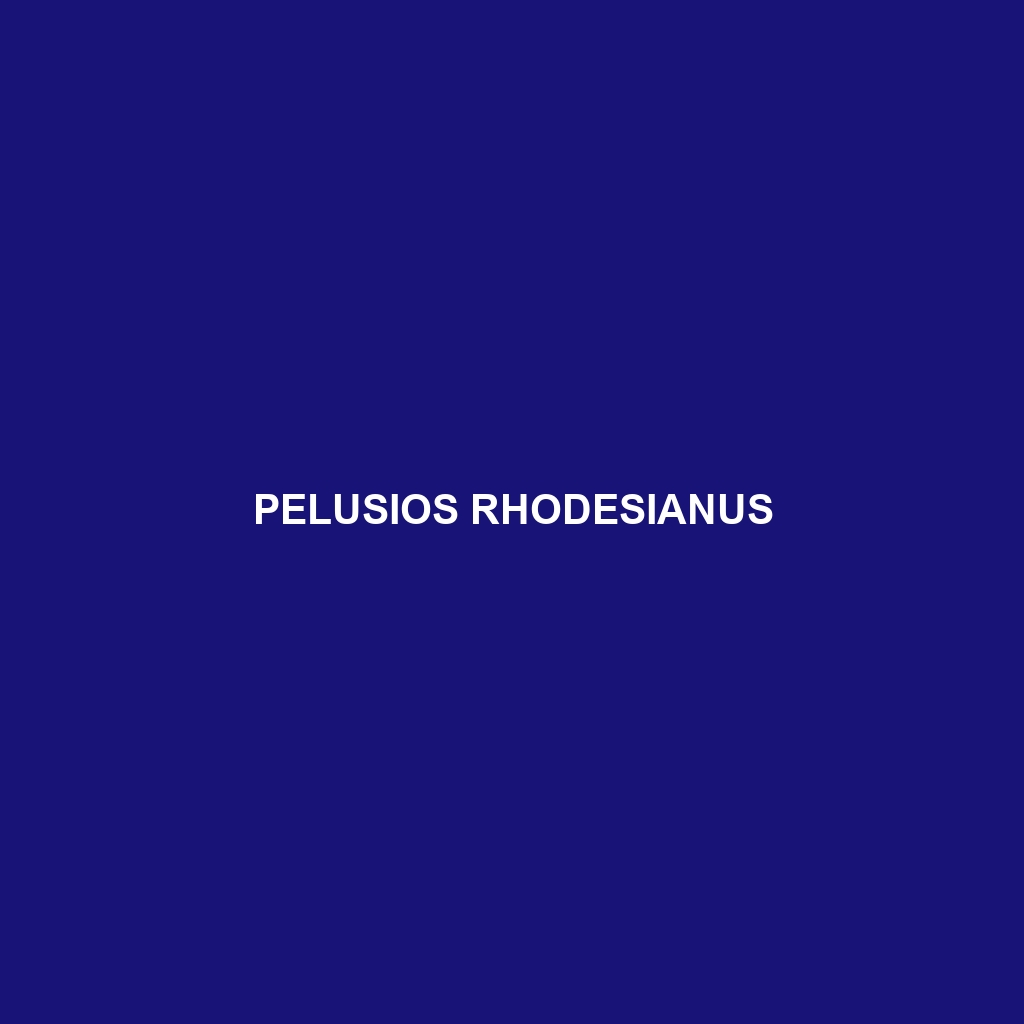Common Name
Pelusios rhodesianus
Scientific Name
Pelusios rhodesianus
Habitat
Pelusios rhodesianus, commonly known as the Rhodesian mud turtle, primarily inhabits freshwater environments across parts of Africa. These turtles are often found in a variety of habitats including rainforests, savannas, and temperate forests. They thrive in slow-moving or stagnant waters such as ponds, marshes, and rivers. These ecological regions provide the necessary conditions for the turtles, featuring moderate temperatures and abundant vegetation, ideal for both basking and foraging. Their preferred habitat also includes muddy bottoms, as these turtles are known to burrow and conceal themselves to avoid predation.
Physical Characteristics
Pelusios rhodesianus exhibits distinct physical features that make it easily recognizable. Adult turtles generally reach a size of around 12 to 16 inches (30 to 40 cm) in carapace length. The carapace is typically oval-shaped, flattened, and displays a smooth texture, which varies in color from dark brown to olive green. One of the key distinguishing features of the Rhodesian mud turtle is its soft, pliable skin that can range from light yellow to brown. The plastron, or underside of the shell, is usually lighter in color, often showing dark patterns. These turtles also possess webbed feet that enhance their swimming ability in their aquatic habitats.
Behavior
The behavior of Pelusios rhodesianus is characterized by a mix of aquatic and terrestrial activities. These turtles are typically diurnal, meaning they are most active during the day, spending considerable time basking in the sun on logs or rocks. During the rainy season, their movements may become more pronounced as they migrate slightly to find suitable breeding grounds and food sources. Pelusios rhodesianus exhibits social behavior, often seen basking in groups, which may serve to maintain body temperature. Mating rituals include elaborate courtship displays where males may engage in swimming circling and nudging the females to initiate mating.
Diet
Pelusios rhodesianus is predominantly an omnivore, showcasing a diverse diet that includes both plant and animal matter. Their diet primarily consists of aquatic vegetation such as algae, water plants, and fruits, alongside small invertebrates like insects and crustaceans. During foraging, they display unique feeding patterns, often scavenging food items on the water’s surface or foraging in mud. This varied diet enables the turtle to thrive in its natural habitat, allowing it to adapt to seasonal changes in food availability.
Reproduction
The reproductive cycle of Pelusios rhodesianus typically occurs during the warmer months, coinciding with the rainy season when food is abundant. Females lay between 5 to 10 eggs per clutch, which they bury in sandy or soft ground near water bodies. The incubation period lasts approximately 60 to 80 days, depending on environmental conditions. Hatchlings emerge during warmer months and are independent from birth, relying on the abundant food supply in their immediate habitat. Parental care is minimal, with females leaving the nest shortly after laying eggs. This reproductive strategy allows for higher survival rates among the young in a favorable environment.
Conservation Status
The conservation status of Pelusios rhodesianus is currently classified as Vulnerable. Threats to their populations include habitat destruction due to agricultural expansion, pollution, and the illegal pet trade. Efforts to conserve the species are ongoing, with various organizations working to protect their native habitats and educate the public on the importance of maintaining biodiversity. Conservation challenges remain significant, and continuous monitoring is essential for their long-term survival.
Interesting Facts
One interesting aspect of Pelusios rhodesianus is its ability to bury itself in mud during dry periods, a unique adaptation that allows it to survive unfavorable conditions. This ability minimizes their exposure to threats and helps to retain moisture during droughts. Another remarkable fact is that these turtles can hold their breath for extended periods, enabling them to remain submerged while foraging or evading predators.
Role in Ecosystem
Pelusios rhodesianus plays an important ecological role within its aquatic environment. As both predator and prey, they contribute to the balance of their ecosystem by controlling the population of aquatic plants and invertebrates. Additionally, they serve as a food source for larger predators such as birds of prey and mammals. This keystone species helps to maintain the health of their aquatic habitats, ensuring that they remain vibrant ecosystems supporting a variety of life forms.
